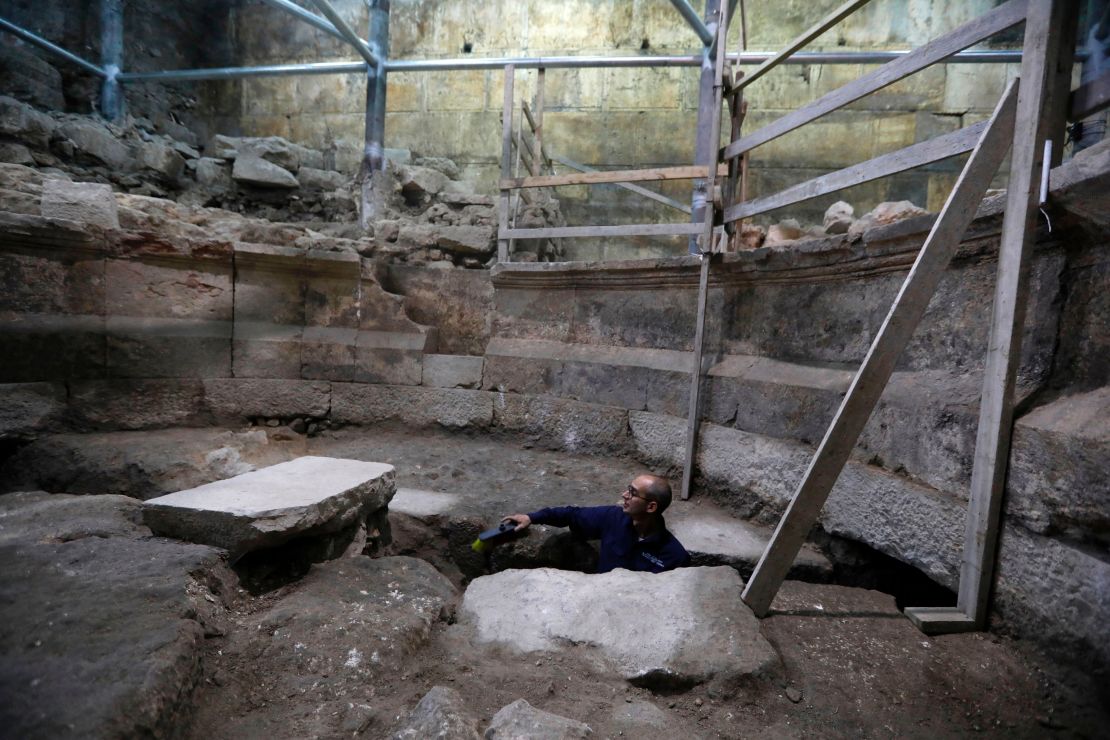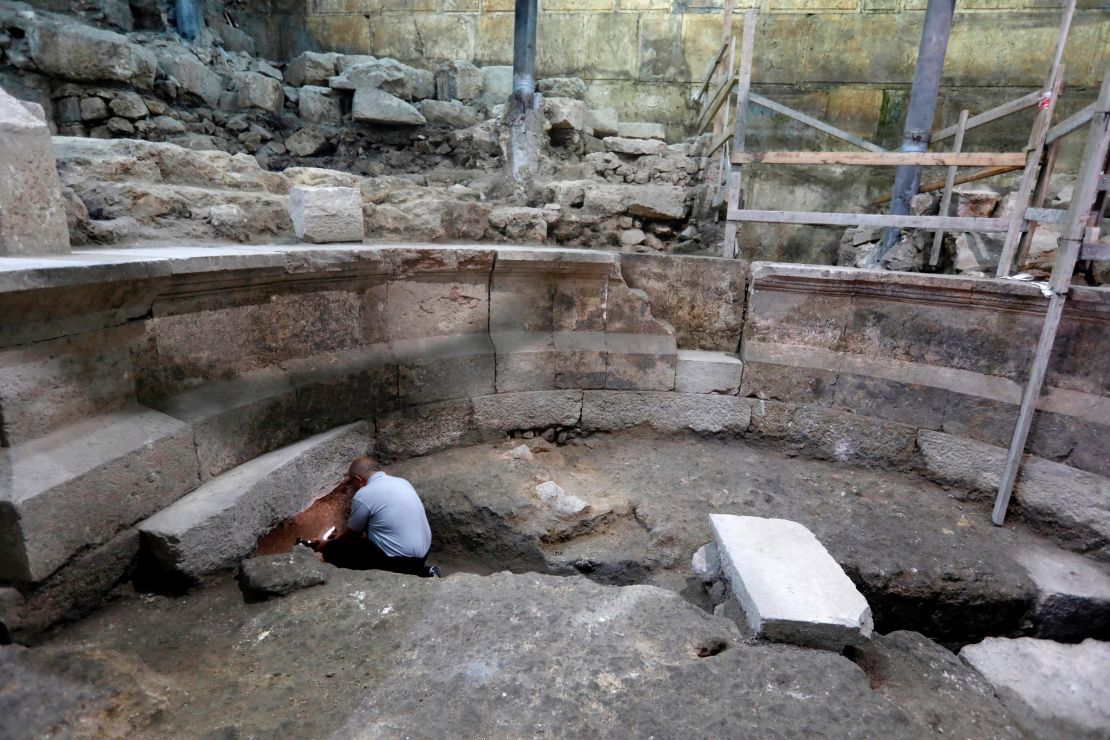Israeli archeologists say they have made a dramatic discovery adjacent to the Western Wall in Jerusalem after unearthing what they believe could have been a theater dating from ancient Roman times.
Excavations by the Israel Antiquities Authority are currently taking place underneath Wilson’s Arch, which stands next to the holy site in the heart of the Old City.
“What’s very exciting about this amazing structure is that we totally didn’t expect to find it here,” archeologist Joe Uziel told CNN. “It’s a theater-like structure that held 200 people.”

The roofed building’s relatively small size, compared to other known Roman theaters, leads experts to believe it could have been an Odeon, a playhouse used for acoustic performances, rather than a larger amphitheater. Another theory being considered is that it was a bouleuterion – a building where the city council would meet.
The structure also appears to be unfinished, as builders did not complete carving some of the sets of stairs.
Uziel speculates the theater may date from the time of the Bar Kokhba revolt, in the second century AD. “When [the revolt] erupts, the buildings were left unfinished in order to go and deal with the rebellion, but [perhaps] they never came back to finish it,” he told CNN.
Archeologists also say they have uncovered eight stone courses of the Western Wall, that had been buried under eight meters of earth. The Western Wall is one of the retaining walls of the compound Jews call the Temple Mount, and Muslims call the Haram al-Sharif.
“There is no doubt that the exposure of the courses of the Western Wall and the components of Wilson’s Arch are thrilling discoveries that contribute to our understanding of Jerusalem,” Uziel says. “But the discovery of the theater-like structure is the real drama.”

Site excavator Tehillah Lieberman attributes the good condition of the discovery to the lack of rain and sunlight over the past 1,700 years.
Archeologists stumbled across these findings while searching for a street related to the period of the second temple.
For decades, Israeli scholars have been trying to discover places mentioned in ancient and biblical texts. Prominent among them are theaters of the kind mentioned by sources such as Josephus Flavius, a Roman Jewish scholar born in the early first century.
Excavations underneath the Temple Mount/Haram al-Sharif are controversial. Palestinians say they are illegal because the Old City is part of territory captured by Israel in 1967, and would comprise part of the capital of a future Palestinian state. They accuse Israel of damaging Islamic holy sites.
Israel refutes these claims saying the charges ignore the historical connection between the Jewish people and their ancient capital.
CNN’s Michael Schwarz contributed to this report.
